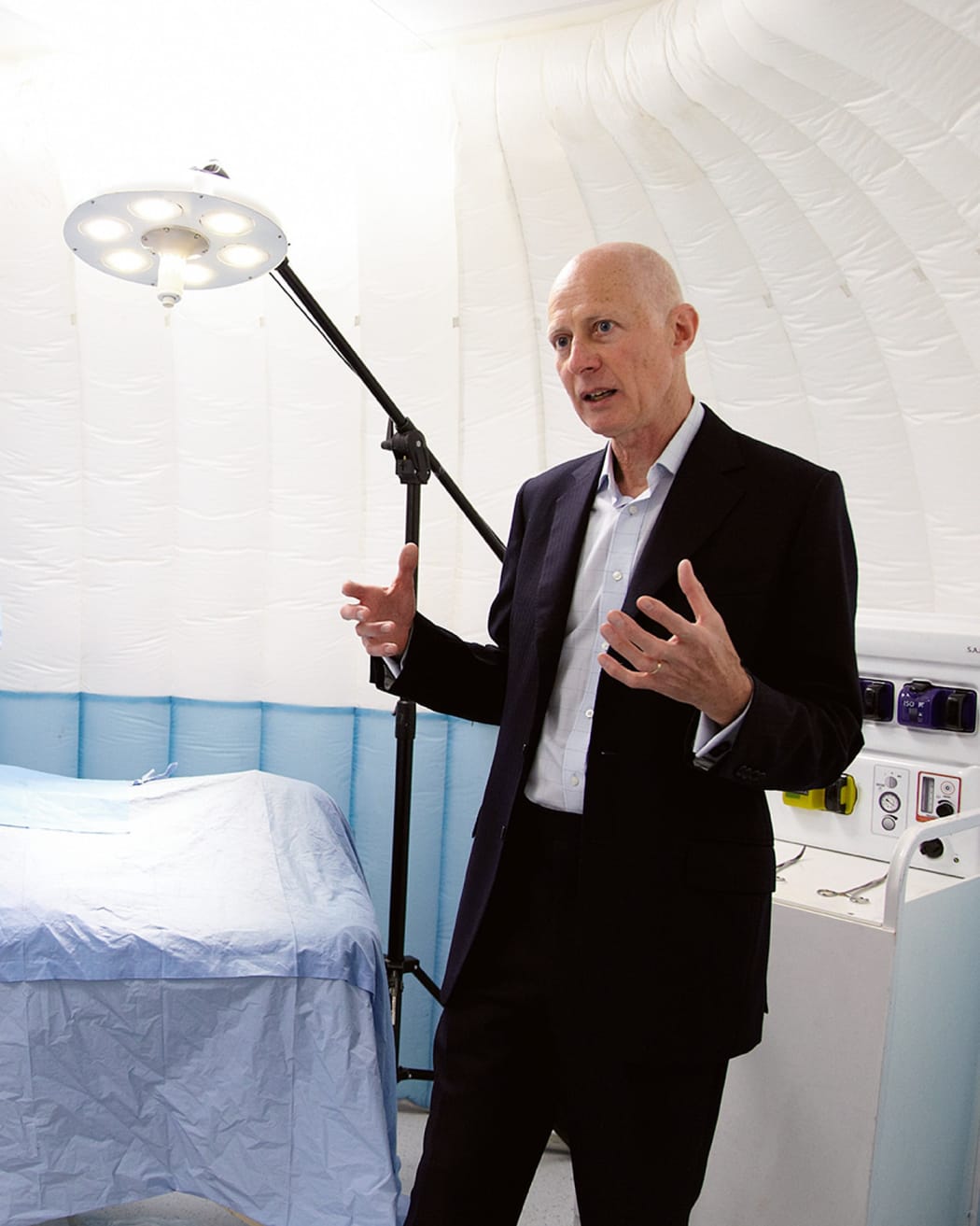
When I met Joshua Byrne over ten years ago I had no idea what bespoke tailoring meant. If I’d thought about it at all, I’d imagined the end result - suits or jackets that were beautifully made and fitted well - but not the process itself. In the years that followed I’ve learned more how Joshua works and found surprising similarities with my own experiences as a doctor.
My first conversations with Joshua took me back to when I was training to become a trauma surgeon. I’d studied as a medical student, qualified as a doctor, then started on a long path to becoming a consultant. When Joshua told me about his work as a tailor, it made me think about my years in the operating theatre, removing and rejoining injured blood vessels or segments of intestine. I thought about the skills I’d developed with needle and thread. But gradually I came to see that these physical similarities were only scratching the surface. As I came to know more about Joshua’s world, I found even greater similarities with the second phase of my career, as a general practitioner (GP). That wasn’t about sewing but about people - about developing a relationship of care with each patient I encountered, a relationship based on integrity and trust and underpinned by knowledge and skill. That’s what underpins Joshua’s work too.
Joshua has told me a lot about the path he’s travelled, the years he’s spent in developing the skills he depends on. He’s explained how his first apprenticeship was as a ‘making’ or ‘sewing’ tailor, learning how to make jackets. He’s described the months and years he spent under his master’s watchful eye, practising over and over again until he was able to carry out every step of this complex process. This was a painstaking journey and he didn’t always enjoy it. But it gave him a deep understanding of what it means to create something of the very highest quality. By the end of that stage he had mastered every aspect of constructing, adjusting and remaking jackets, overcoats and suits. But in all that time he never saw a customer.
Unusually, Joshua then underwent a second apprenticeship, this time as a cutting tailor. I learned that ‘cutting’ is shorthand for a complex combination of aesthetic judgement, technical knowhow, practicality and skilled communication. It’s how a tailor works with each customer to build a picture of their needs and wishes, a sense of that person and the role a suit or jacket will play in their life. Traditionally, each tailoring firm would have have a house style. Every customer would be provided with a perfectly-fitting garment in the cloth of their choice, but basic design decisions had already been laid down.
Joshua’s approach is radically different. For him, the starting point with every garment is the person who will wear it. Instead of using a pre-designed ‘block’, Joshua begins with a blank sheet, designing each suit or jacket from scratch on every occasion. That allows him to shape and develop the garment through the sequence of fittings that characterise the bespoke experience. Between fittings a jacket will be dismantled or ‘ripped down’, then adjusted and reassembled by a making tailor. The final product is the result of a collaboration between tailor and customer, a shared enterprise of creativity.
This process resonated with me as a clinician, especially my years as a general practitioner or family doctor. There, like Joshua, my starting point was to get a picture of each patient as an individual, of how their illness was affecting their lives. Only then could we work together to decide on a way forward, to arrange a test or procedure or design a course of treatment. Like Joshua, I needed a long apprenticeship to gain the knowledge and skills my profession requires. Like Joshua, I had to learn how to connect with patients from every kind of background and experience. Like Joshua, I had to learn the skills of interacting with people.
A pivotal time for Joshua was his second apprenticeship, as a cutting tailor. His ‘master’ (in the long-established terminology of the tailoring world) was Arthur Catchpole, an inspiring figure who was nearing the end of his career when he took Joshua under his wing. Arthur did much more than teach Joshua techniques. His wise yet watchful mentorship encouraged Joshua to grow and develop, to make his own mistakes and learn from them. Arthur supported Joshua in becoming the expert he is today. The generosity of time and care which Arthur showed is a human quality, not something confined to tailoring. At the university where I now teach, I see the importance of that relationship between an expert mentor and an enthusiastic learner every day.
Joshua and I have been collaborating over a decade. We’ve given public lectures together, we’ve shared conference platforms and we’ve had conversations with experts from many different fields. Each time we talk we find further points of connection between the very different paths our careers have taken. But underneath it all is a belief that suits and jackets - like operations and medicines - are only as important as the people they are designed for. For Joshua and for me, that is the essence of bespoke.
You can read and listen to more about our collaboration here:
Expert: Understanding the Path to Mastery (Penguin Viking, 2020)
Https://www.penguin.co.uk/books/313248/expert/9780241392034.html
Roger and Joshua talk in Roger’s fortnightly podcast Countercurrent (February 2020)
https://rogerkneebone.libsyn.com/joshua-byrne-in-conversation-with-roger-kneebone
Gresham Lecture What Medicine Can Learn From Savile Row (October 2020)
https://www.gresham.ac.uk/lectures-and-events/medicine-tailor
Lancet article Bespoke practice, January 2017 (doi: 10.1016/S0140-6736(16)32603-4)
https://www.thelancet.com/journals/lancet/article/PIIS0140-6736(16)32603-4/fulltext
Photographer: Sara Lyndsey